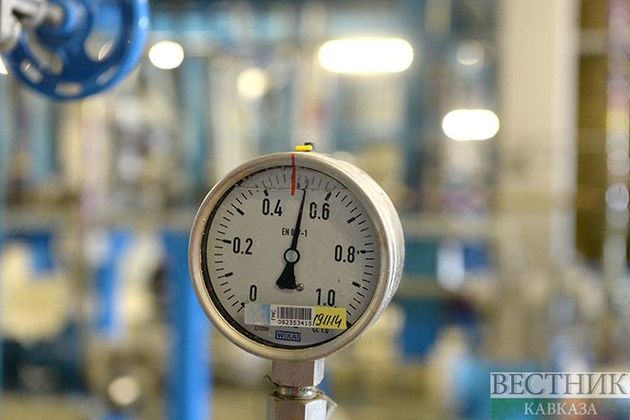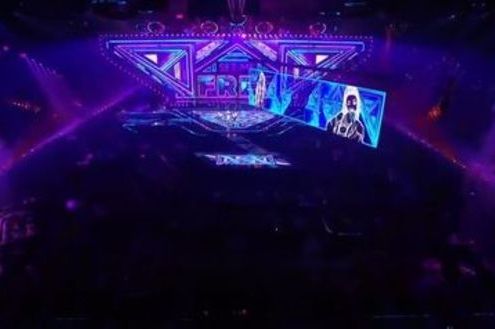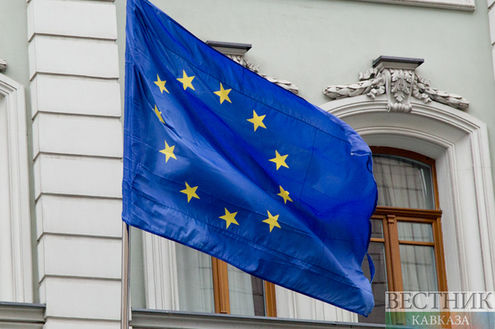The European Union's natural gas reserves are well under normal levels — and if they don't fill up by October, the bloc could face a price squeeze if there's a repeat of last winter's cold snap, analysts warn, Politico writes.
"Going into the current winter with less in storage, Europe is walking a tightrope — and it wouldn't take a huge gust of wind to knock us off," said Jack Sharples, a research fellow at the Oxford Institute for Energy Studies. "All it would take is for some [liquefied natural gas] projects currently offline to not come back on, or some unplanned maintenance on a pipeline bringing gas into Europe, or just another cold winter."
The EU has the capacity to store over 117 billion cubic meters (bcm) of natural gas, or roughly a fifth of its annual consumption, according to Gas Infrastructure Europe.
Those reserves were full a year ago — which is what allowed the bloc to comfortably weather an unusually long winter that sent global gas prices skyrocketing in January.
Europe "managed to get through last winter relatively unscathed, as we had such high storage stocks at the start," said James Huckstepp, gas analyst at S&P Global Platts.
Currently, EU storage facilities are filled to only 60 percent capacity, or just under 70 bcm of gas. That needs to get up to at least 80 bcm by October 1 to ensure a proper buffer against market fluctuations through winter, Sharples said.
But part of the reason reserves were so full in 2020 was that the pandemic had stalled the economy, creating a massive supply glut had sent prices crashing to as little as $3 gas per million British Thermal Units (mmBTU). In March 2020, Europe was awash in cheap gas and canceling U.S. liquefied natural gas (LNG) carriers bringing over more than the bloc needed.
Spot prices for gas are currently rising above $15 on the benchmark Dutch TTF hub.
Part of that price climb is due to a tight global market caused by this year's surge in industrial production as well as unexpected factors like natural disasters and outages, said Mike Fulwood, a senior research fellow at the Oxford Institute.
"In South America, the drought in Brazil has depleted their hydropower so they're importing more LNG, as is Argentina, and European demand looks as though it's going to be higher this year than in 2019, which is unexpected, so we've got a lot of factors increasing demand," Fulwood said.
That’s coincided with supply-side technical issues. “Trinidad is down a lot, we’ve had extended maintenance in Australia, Nigeria is lower, Papua New Guinea, Peru … add them all together and we’ve probably lost on an annual basis about 20 bcm worth of LNG supply, which is 5 percent or so of the market,” Fulwood added.
In Europe, Norway's Troll gas field — Europe's largest — went down for unplanned maintenance on July 27, prompting operator Equinor to fire up production at other sites to try and make up for reduced volumes.
On August 6, Russia's state-owned Gazprom also dramatically reduced shipments through the Yamal pipeline — which runs through Belarus and Poland — citing a fire at a gas processing facility in western Siberia. The company instead began withdrawing its gas reserves located in the EU to fulfill contracted deliveries, further exacerbating the storage issue.
Prices also jumped this week after Gazprom only booked a small fraction of transit capacity offered by Ukraine for September.
Fulwood said Gazprom might be holding off on booking commitments through Ukraine in the hope that German regulators would approve the Nord Stream 2 pipeline later this year.
"There is a bit of a fear premium on prices, everybody's a lot more jumpy, and you're going to see bumps in prices probably outsized in proportion to the events," Sharples said of the Gazprom-induced market surges. "If the winter that had just gone past had been very mild ... people wouldn't be panicking so much."






